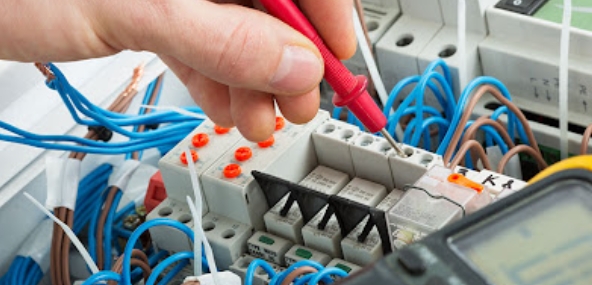Relays play a crucial role in various industries, ensuring the safe and efficient operation of electrical systems. But have you ever wondered how a relay senses faults? In this blog post, we will delve into the intricate workings of relays, exploring the mechanisms that enable them to detect and respond to faults accurately. From electromagnetic relays to solid-state relays, we will uncover the underlying principles and technologies that make fault sensing possible.
- Understanding Relay Basics:
Before diving into fault sensing, let's establish a foundational understanding of relays. Relays are electromechanical devices that act as switches, controlling the flow of electrical current in a circuit. They consist of a coil, an armature, and a set of contacts. When the coil is energized, it generates a magnetic field that attracts the armature, closing or opening the contacts, thereby completing or interrupting the circuit. - Fault Sensing Mechanisms:
2.1 Overcurrent Protection:
One of the primary functions of a relay is to sense overcurrent conditions and protect the system from potential damage. This is achieved through the use of current transformers (CTs) or current sensors that monitor the current flowing through the circuit. When the current exceeds a predefined threshold, the relay detects the fault and initiates the necessary protective actions.
2.2 Voltage Monitoring:
Relays also employ voltage monitoring techniques to sense faults such as overvoltage or undervoltage conditions. Voltage sensors or potential transformers (PTs) are utilized to measure the voltage levels. If the voltage exceeds or falls below the acceptable range, the relay triggers an alarm or activates protective measures to prevent equipment damage.
2.3 Frequency Deviation Detection:
In certain applications, such as power generation and distribution, maintaining a stable frequency is crucial. Relays equipped with frequency monitoring capabilities can detect deviations from the nominal frequency. If the frequency exceeds the predefined limits, the relay identifies a fault and takes appropriate corrective actions.
2.4 Temperature Monitoring:
Relays operating in high-temperature environments require temperature monitoring to ensure safe operation. Temperature sensors integrated into the relay continuously measure the ambient temperature. If the temperature surpasses the set threshold, the relay responds by tripping the circuit or initiating cooling mechanisms.
- Advanced Fault Sensing Technologies:
3.1 Microprocessor-Based Relays:
Modern relays often incorporate microprocessors, enabling advanced fault sensing capabilities. These relays can analyze multiple parameters simultaneously, providing enhanced accuracy and reliability in fault detection. Additionally, microprocessor-based relays offer advanced communication capabilities, facilitating remote monitoring and control.
3.2 Intelligent Algorithms:
To improve fault sensing accuracy, intelligent algorithms are employed in some relays. These algorithms analyze complex patterns and trends in electrical parameters, enabling the relay to differentiate between genuine faults and transient disturbances. By reducing false alarms, these relays enhance system efficiency and minimize downtime.
Conclusion:
Relays are indispensable components in electrical systems, and their ability to sense faults is crucial for maintaining system integrity and preventing catastrophic failures. Through various fault sensing mechanisms and advanced technologies, relays can accurately detect overcurrent, voltage deviations, frequency deviations, and temperature abnormalities. By understanding how relays sense faults, engineers and technicians can design and implement robust protection schemes, ensuring the safe and reliable operation of electrical systems.


